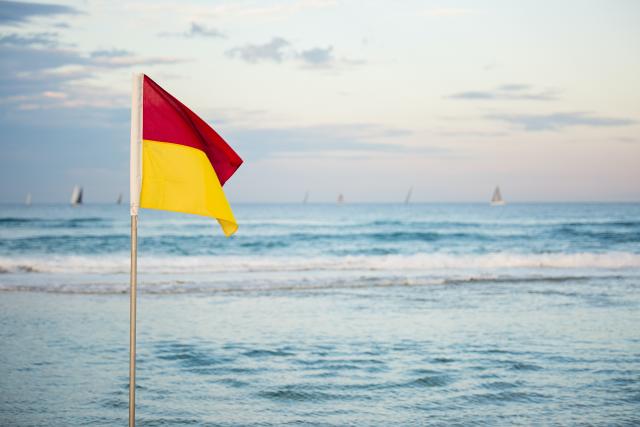As we flock to the beach for the summer break, it’s important to make we know how to remain safe at the beach.
In the last 12 months, 339 drowning deaths occurred across Australia, the highest in 25 years, prompting water safety experts to issue an urgent plea to make safety a focus this summer.
New research by Australia’s leading water safety authorities Royal Life Saving Society – Australia (RLSSA) and Surf Life Saving Australia (SLSA) reveals a tragic spike in drowning deaths over the past 12 months.
The Royal Life Saving National Drowning Report 2022 found that there were 339 drowning deaths over the past 12 months from September 2022, which is 15 per cent higher than last year (295), and the highest reported figure since 1996. Sadly, 39 deaths were flood-related.
Royal Life Saving Society Australia CEO Justin Scarr said Royal Life Saving is deeply saddened by another tragic increase in drowning, with the pandemic and the wet, hot weather combining to create a terrible year for drowning on waterways.
“This is the worst year for drowning since 1996. Increased drowning deaths in school-aged children is tragic and may be a sign of generational impacts of lessons missed due to COVID-19. Swimming and water safety lessons are critical to child safety,” he said.
“Drowning deaths in older people, aged over 65 years, now represents 26 per cent of all fatal drowning. We urge adults of all ages to consider the impacts of medical conditions, alcohol, and swimming ability has on their water safety.”
The Surf Life Saving National Coastal Safety Report 2022 found that 141 of those drowning deaths occurred along the coast, the highest number recorded by SLSA since 2004, and sadly a 16 per cent increase on the 10-year average.
Surf Life Saving Australia CEO Adam Weir said during the twelve-month period, we have sadly seen a continuation from the tragedies of the previous year which should be a concern to all.
“This year has been the worst we have experienced since collecting coastal drowning information during the past 18 years. Despite performing more than 8,600 rescues and over 58,300 first aid treatments, there were 141 coastal drowning deaths recorded. This is a distressing result for all emergency service groups in addition to being devastating to so many families, friends and loved ones,” he said.
“With many of these tragedies unfolding at remote and isolated locations, SLSA is appealing for the public to consider where they are recreating and understand their limitations, swim at patrolled beaches between the red and yellow flags, with these locations available on the Surf Life Saving BeachSafe App,” he said.
Both organisations are concerned about the impact of flooding, people swimming at unpatrolled locations, and reported increases in drowning among older adults and in school-aged children.
Several key trends have emerged.
More than 28 per cent of all drowning 94 drowning deaths were in people over the age of 65, an increase of 34 per cent from last year.
15 drowning deaths occurred in children aged 5-14 years, a 7 per cent increase on last year, and perhaps a reflection of children missing out on swimming lessons during the Covid-19 pandemic.
SLSA reports that 49 per cent of the coastal drowning deaths occurred more than 5km from a surf lifesaving service, a factor that may have resulted from people seeking out more secluded swimming spots.
Men account for 83 per cent of all drowning. Alcohol and drugs, risk taking behaviour and men over-estimating their swimming ability are all considered key factors.
39 drowning deaths were flood-related, the majority in the eastern states (New South Wales, Queensland, Victoria).
While further research is needed, the findings highlight the ongoing impacts of COVID-19 on drowning risk, including Australians being more likely to visit unfamiliar, unpatrolled water locations and children lacking swimming skills necessary to enjoy the water safely due to pandemic-induced lesson cancellations.
With the support of the Australian Government, Surf Life Saving and Royal Life Saving are looking at strategies ahead of the warmer months, including bringing forward water safety campaigns, delivering lifesaving services and working with governments, councils and groups across the country.
Federal Minister for Aged Care and Sport, the Hon Anika Wells MP, said the Australian Government was determined to support organisations like Royal Life Saving Society – Australia and Surf Life Saving Australia to raise water safety awareness.
“The increased drowning of older people is particularly distressing. Enjoying a swim has so many benefits for people of all ages. Some simple precautions, like a medical check-up to ensure you are swim fit or going to the local swimming pool to refresh your skills is a great idea ahead of summer,” she said
“As we prepare for summer, water safety should be top of mind. I urge all Australians to supervise children at all times around water, learn swimming, water safety and lifesaving skills, wear a lifejacket when boating, rock fishing and on watercraft and swim at a patrolled beach between the red and yellow flags.”







